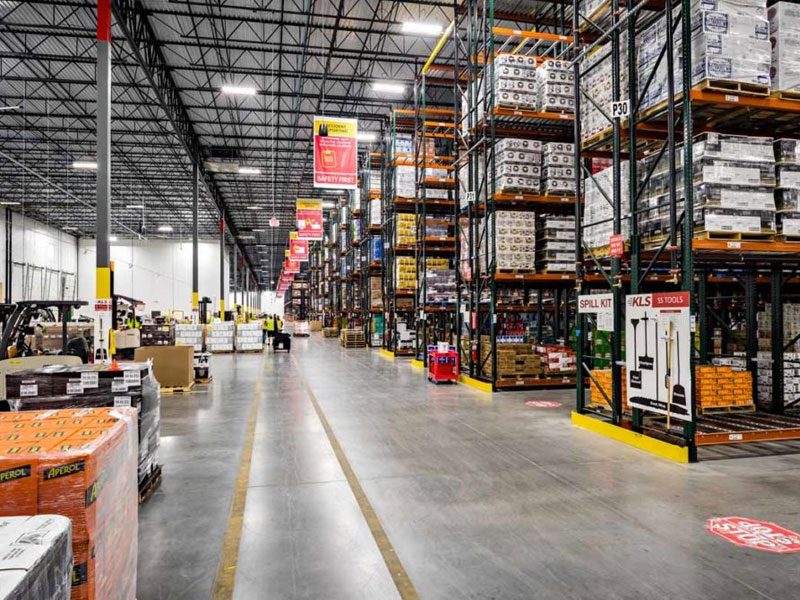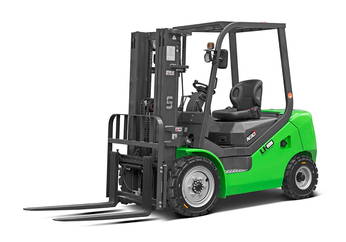Understanding the Importance of Diesel Forklift Maintenance Cycles
The maintenance cycle of diesel forklifts is a systematic plan designed to ensure reliable performance, stable operation, and longer service life. Diesel forklifts operate under heavy loads, variable temperatures, and diverse working environments, which makes structured maintenance essential for safety and operational continuity. The maintenance cycle covers routine inspections, lubrication schedules, filter replacement intervals, and more advanced engine checkups. These tasks help reduce unexpected failures and avoid production downtime. A well-designed maintenance cycle also supports fuel efficiency and contributes to cleaner emissions by keeping the engine and exhaust system in stable condition.
Daily Inspection and Pre-Operation Checks
Daily inspection forms the first stage of the diesel forklift maintenance cycle and should be conducted before each shift. Operators typically perform visual assessments, focusing on fluid levels, tire condition, forks, hydraulic hoses, and the general appearance of the machine. Checking the engine oil, coolant, and fuel levels ensures that the forklift can operate without unnecessary strain on its internal components. The operator also listens for abnormal engine noises, checks the dashboard for warning indicators, and ensures that safety features function properly. These simple yet essential tasks reduce the risk of operational failures and serve as the foundation for a consistent maintenance program.
| Item | Inspection Point | Purpose |
|---|---|---|
| Engine Oil | Check level and presence of leaks | Ensures lubrication and reduces friction |
| Tires | Observe wear, embedded objects, and pressure | Supports stable handling and safety |
| Hydraulic System | Check hoses and connections for leakage | Prevents lifting issues and loss of pressure |
Weekly Preventive Care Requirements
Weekly maintenance extends beyond daily checks and focuses on functional performance of mechanical systems. It typically involves cleaning the air filter element, inspecting the battery terminals, and ensuring that all pivot points receive proper lubrication. The air intake system is especially important for diesel forklifts because dust accumulation can lead to reduced engine efficiency and increased fuel consumption. During weekly maintenance, operators may also inspect the brake system for wear, tighten loose bolts, and check the condition of the drive belt. These actions support stable operation and prevent minor issues from escalating.
Monthly Systematic Inspection
Monthly maintenance activities involve detailed mechanical evaluations conducted by trained technicians. These procedures include inspecting the alternator belt tension, checking the coolant concentration, examining the steering performance, and reviewing the lift chain condition. Technicians also clean or replace the air filter depending on working conditions. Forklift engines used in dusty or humid environments require more frequent filter servicing to ensure adequate airflow. The hydraulic oil level is also inspected, and the mast rollers are examined for signs of wear or misalignment. This level of maintenance helps maintain consistent lifting performance and supports operational stability.
| Monthly Task | Focus Area | Expected Outcome |
|---|---|---|
| Air Filter Maintenance | Intake system | Maintains airflow and engine efficiency |
| Lift Chain Inspection | Mast assembly | Smooth and safe lifting motion |
| Coolant Check | Cooling system | Prevents overheating during long operations |
Quarterly Engine and Transmission Servicing
Quarterly maintenance is a crucial part of the diesel forklift maintenance cycle because it involves servicing core components such as the engine and transmission. Technicians drain and replace the engine oil and oil filter to ensure proper lubrication. Diesel engine oil breaks down due to high temperature and heavy load, making timely replacement necessary. The transmission system is also checked for smooth gear shifting and any signs of slipping. The technician verifies the condition of the fuel filter, which is essential for preventing contamination from reaching the injection system. During this period, exhaust systems, wiring harnesses, and cooling fans are inspected for signs of deterioration.
Semi-Annual Safety and Performance Assessment
Every six months, a comprehensive assessment is required to examine safety, structural integrity, and mechanical condition. Forks undergo wear measurement, and mast alignment is verified to ensure that lifting operations remain safe. The brake system is dismantled for inspection, including brake fluid condition and brake pad thickness. Semi-annual evaluations often include torque checks on key bolts and frame components, ensuring that the forklift continues to withstand heavy operational loads. The technician may also perform a more detailed hydraulic system assessment to detect pressure inconsistencies or contamination.
| Component | Inspection Focus | Impact on Operation |
|---|---|---|
| Forks | Wear, bending, and cracking | Ensures safe pallet lifting |
| Brakes | Pad wear and hydraulic condition | Supports safe stopping ability |
| Mast | Roller condition and alignment | Maintains lifting accuracy |
Annual Overhaul for Comprehensive Restoration
Annual maintenance represents the most extensive stage of the diesel forklift maintenance cycle. The goal is to evaluate the overall condition of the machine and perform restoration tasks that improve long-term operation. Typical procedures include draining and replacing hydraulic oil, checking the fuel injection pump, conducting engine compression tests, and inspecting the transmission for internal wear. Major components such as the radiator, exhaust system, and differential may also undergo cleaning or partial disassembly. Electrical systems, including the starter motor and alternator, receive detailed inspection to ensure correct operation. Annual maintenance restores engine power consistency and ensures the forklift meets operational safety expectations.
Maintenance Cycle Adjustments Based on Working Conditions
The frequency of diesel forklift maintenance can vary depending on the working environment, industry application, and load characteristics. Forklifts operating in dusty, humid, or corrosive environments require shorter maintenance intervals, especially for air filters, hydraulic systems, and engine components. Warehouses handling heavy materials or operating multiple shifts may schedule oil changes more frequently to prevent accelerated component wear. On the other hand, forklifts used in cleaner environments with moderate loads may follow standard maintenance intervals recommended by manufacturers. Adjusting maintenance schedules based on actual conditions helps maintain stable performance and avoids unnecessary downtime.
Recommended Maintenance Schedule Overview
A structured maintenance schedule helps facility managers track every stage of diesel forklift care. The following table provides a summarized maintenance cycle commonly used in industrial environments. Organizations may modify the schedule based on manufacturer recommendations and operational requirements.
| Maintenance Stage | Typical Interval | Main Tasks |
|---|---|---|
| Daily Inspection | Before each shift | Fluid checks, tire inspection, safety verification |
| Weekly Care | Every 7 days | Air filter cleaning, lubrication, battery inspection |
| Monthly System Check | Every 30 days | Steering, lift chain, coolant, hydraulic check |
| Quarterly Service | Every 250 hours | Oil change, fuel filter inspection, transmission check |
| Semi-Annual Evaluation | Every 500 hours | Brake assessment, mast alignment, structural fasteners |
| Annual Overhaul | Once per year | Hydraulic oil replacement, engine test, exhaust inspection |
The Role of Skilled Technicians in the Maintenance Cycle
Proper execution of each maintenance cycle depends on skilled technicians who understand diesel engine mechanics and forklift operating systems. Their expertise ensures accurate inspection results, correct part replacements, and safe reassembly of critical components. Skilled technicians use diagnostic equipment to evaluate engine performance and determine whether adjustments are needed. Their input is essential for identifying potential issues early, which helps prevent costly repairs. Technicians also ensure compliance with workplace safety standards and manufacturer guidelines, making their role significant in maintaining diesel forklift reliability.
The Influence of Proper Maintenance on Operational Costs
A well-maintained diesel forklift contributes to lower operational costs by reducing the likelihood of major failures, improving fuel efficiency, and extending part lifespan. Regular oil changes, clean filters, and proper lubrication reduce friction, allowing the engine to run more smoothly. This reduces fuel consumption and prevents premature wear. Scheduled maintenance also lowers the risk of breakdowns that may disrupt workflow or require emergency repairs. When forklifts operate consistently, the warehouse or production facility benefits from stable productivity and predictable maintenance budgeting.
Enhancing Safety Through Regular Maintenance Cycles
Safety is directly connected to the reliability of diesel forklifts, and maintenance cycles play a major role in accident prevention. Brake inspections, steering checks, and mast evaluations ensure that the machine remains stable during operation. Maintenance also ensures clear visibility through clean lights and functional warning systems. Structural checks help prevent failures of forks or chains, which could otherwise lead to workplace hazards. By adhering to a systematic maintenance cycle, organizations maintain safe conditions for operators and protect personnel working near forklift operations.
Long-Term Benefits of Structured Forklift Maintenance Cycles
Maintaining a consistent maintenance cycle provides long-term operational advantages for organizations using diesel forklifts. Consistent servicing supports equipment durability, stable lifting capacity, and predictable performance in demanding environments. By following structured schedules, facility managers can plan parts replacement, manage inventory, and avoid unexpected machine downtime. A reliable maintenance cycle also helps retain the forklift’s value, supporting long-term asset management. Ultimately, the structured maintenance cycle ensures that the forklift remains dependable throughout its service life, contributing to smoother logistics and more efficient material handling operations.











 中文简体
中文简体 عربى
عربى Español
Español














